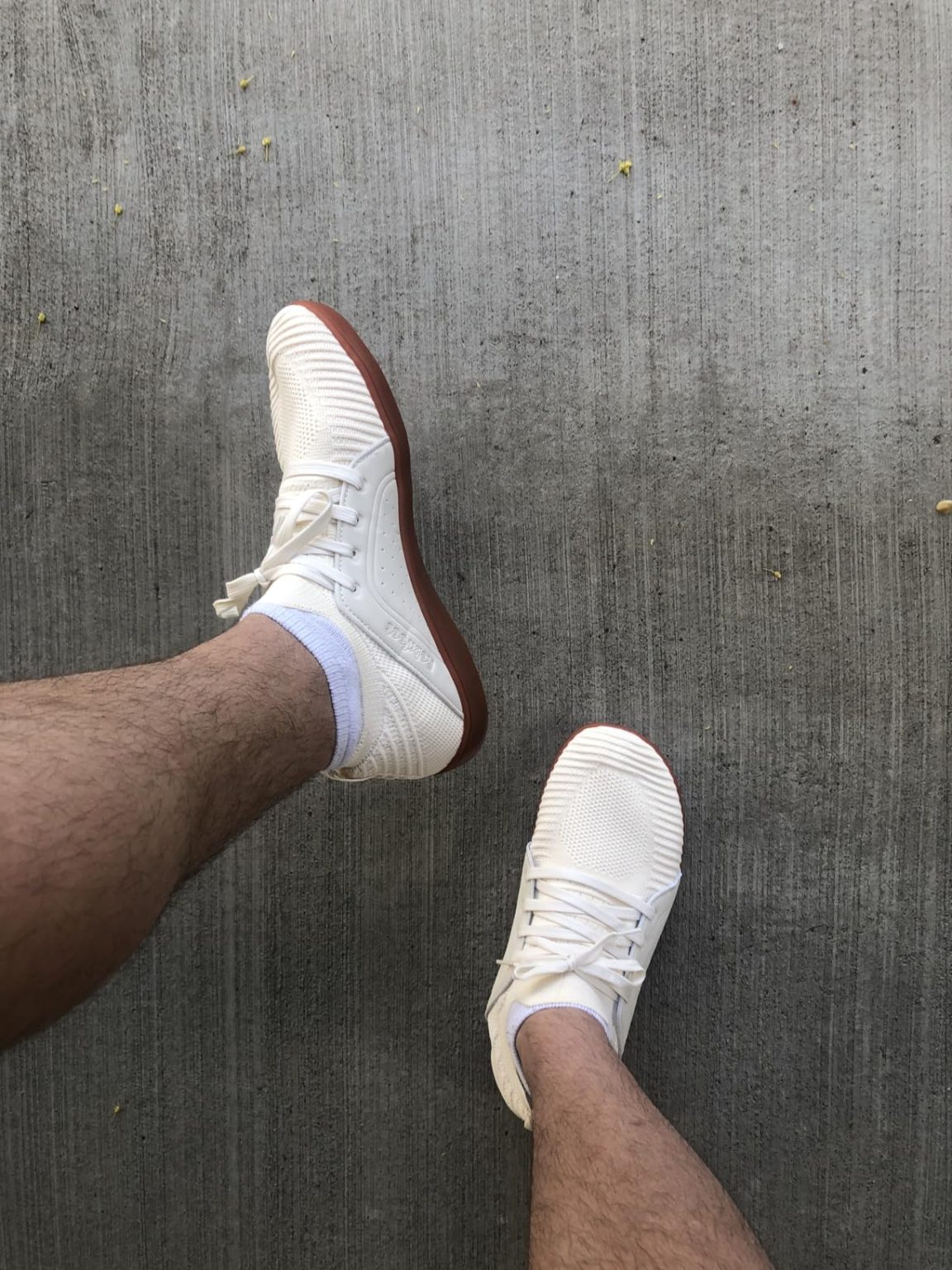After burning through $300 worth of training shoes in six months, discovering the Relxfeet Men’s Barefoot Shoes at $35 felt like either a massive gamble or a budget miracle waiting to happen. Mike here, and as a dad who’s tired of explaining to my wife why I need “another pair of gym shoes,” I was determined to find something that wouldn’t break the bank or fall apart after a month. That’s why I spent 8 weeks putting these through every cross-training scenario I could imagine. Here’s whether they live up to their barefoot promises.
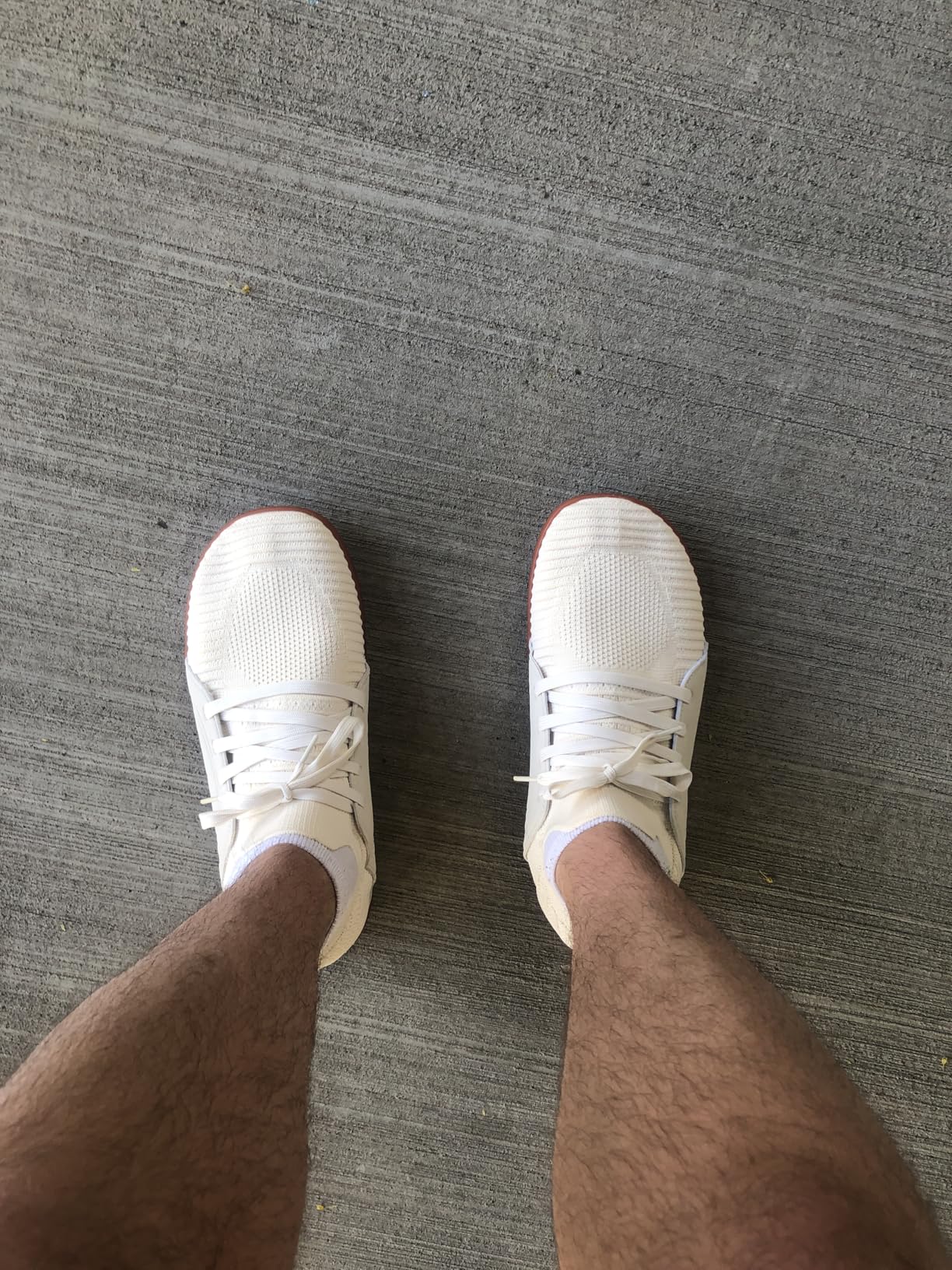
Technical Specifications
- 💰 Price: $35 ()
- ⚖️ Weight: 0.55 lbs (men’s size 9)
- 📏 Heel-to-toe drop: 0mm (true zero drop)
- 📐 Stack height: ~12mm (minimal cushioning)
- 🧪 Midsole material: High-density compressed foam
- 👟 Upper material: Soft knit mesh with synthetic overlays
- 🏃♂️ Category: Barefoot cross-training/lifestyle
- 🎯 Best for: Gym workouts, walking, light running, wide feet
- ⏱️ Testing period: 8 weeks, 45+ training sessions, daily wear
Design, Build Quality & Real-World Performance

Upper Construction & Fit Experience
The first thing that hits you with the Relxfeet barefoot shoes is that wide toe box – and I mean genuinely wide, not the “marketing wide” you get from most brands. At 180 lbs with size 10.5 feet, I’ve struggled with toe cramping in traditional cross-trainers, but these give my toes the room they actually need to spread and grip.
The soft knit upper feels substantial enough for daily abuse but breathable during intense workouts. Unlike some budget shoes that feel plasticky, this material has a textile quality that doesn’t trap heat. The lacing system uses a stretchy, sock-like construction – no separate tongue – which means you can slip them on without untying, but also means you need to be careful with the laces.
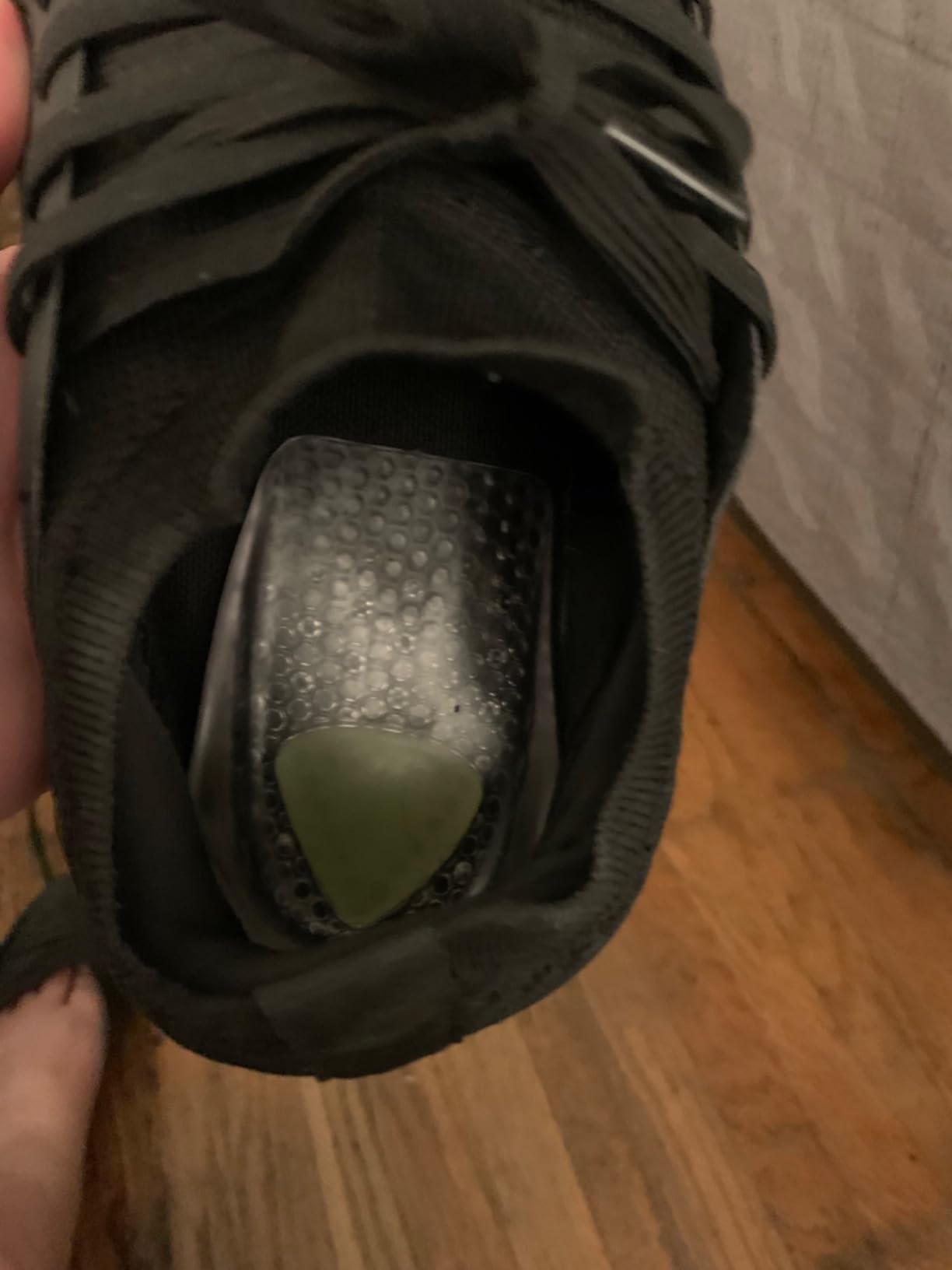
Here’s where I need to be straight with you – the eyelet construction is this shoe’s Achilles heel. During my first week, I had the same experience as many other reviewers: the lace tore through the fabric eyelet when I tried to get a secure fit. I ended up using an awl to create a new hole slightly lower, and it’s held up since then. This isn’t a deal-breaker at $35, but it’s something you need to know going in.
Zero Drop Performance & Ground Feel
Coming from traditional training shoes with heel elevation, the zero drop took about a week to adapt to. Initially, my calves felt the difference during workouts, but after that adjustment period, the ground connection became addictive. During deadlifts and squats, I felt more stable and planted compared to my old cushioned trainers.
The 12mm stack height provides enough protection for gym floors and pavement while maintaining that barefoot sensation. When I tested these during outdoor HIIT sessions on grass and gravel, I could feel the surface texture without discomfort. It’s not quite as thin as premium barefoot brands like Vivobarefoot, but for a gateway into minimalist training, the cushioning level hits the sweet spot.
Cross-Training Performance Analysis
I put these through my typical training routine: compound lifts, HIIT circuits, rope climbs, box jumps, and burpees. The wide platform and zero drop made me feel more connected during squats and deadlifts – no more wobbling on unstable foam. The flexible sole bent naturally during lunges and lateral movements without restricting my foot’s natural motion.
For rope climbing, the thin sole gave me better grip and feel on the rope compared to thick-soled trainers. During box jumps, the landing felt more natural, though I noticed my feet had to work harder for impact absorption – exactly what you’d expect from minimalist footwear.
The anti-slip rubber outsole performed well on gym floors, even when sweaty. I tested them on wet surfaces around the pool area, and the traction held up better than expected for a budget shoe.
Performance in Various Training Conditions
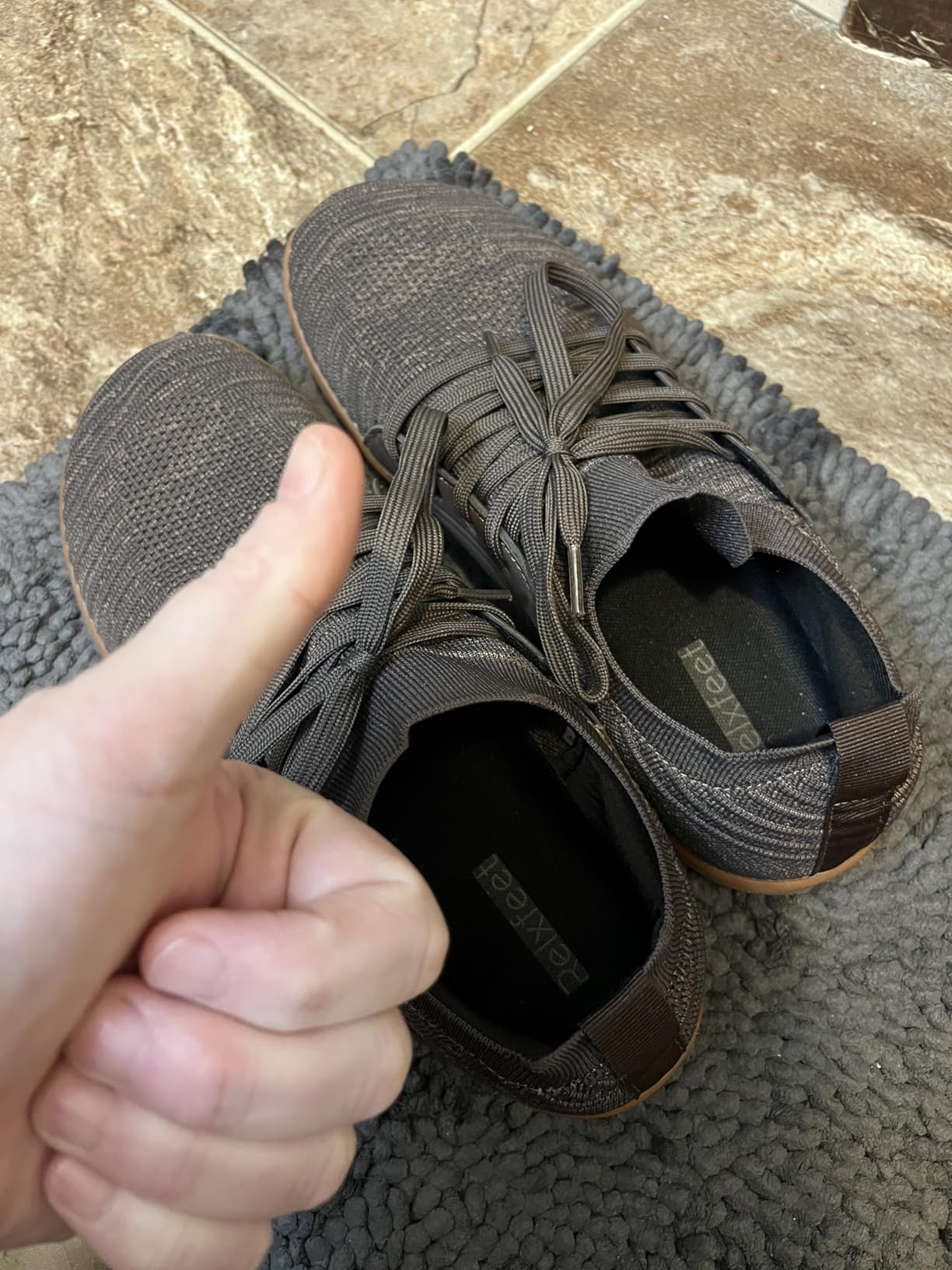
Indoor Gym Performance
During 8 weeks of regular gym sessions (3-4 times per week), these shoes proved their worth as cross-trainers. The wide toe box eliminated the toe pinching I experienced with traditional sneakers during lateral movements. The zero drop platform made me feel more grounded during heavy lifts – no more heel compression affecting my squat depth.
The breathable upper kept my feet comfortable during hour-long sessions, though I noticed the insole started showing wear after about 6 weeks of intensive use. The removable insole is a nice touch – you can replace it with your preferred option or remove it entirely for a more barefoot experience.
Outdoor Training & Walking
I tested these during outdoor workouts on various surfaces: grass, concrete, gravel paths, and even some light trail walking. The thin but protective sole provided adequate ground feel while shielding my feet from sharp objects. On concrete, they felt comfortable for walks up to 3-4 miles, though I wouldn’t recommend them for serious distance running.
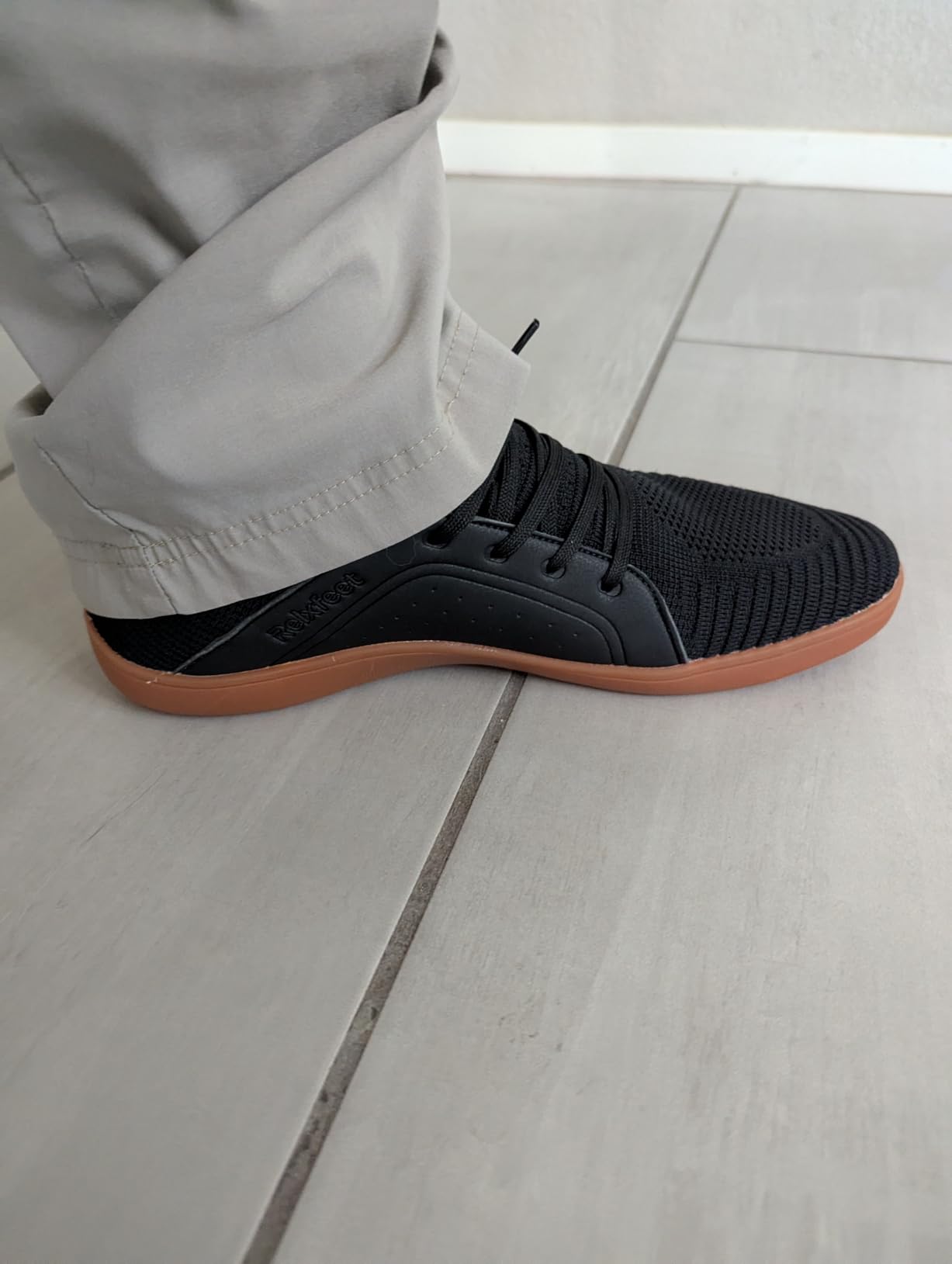
The army green colorway proved versatile enough for casual wear – I wore these for errands, casual outings, and even to my kid’s school events without looking out of place. They’re definitely more stylish than typical barefoot shoes that often look like boat shoes or medical footwear.
Long-Term Durability Assessment
After 8 weeks of daily use, here’s the honest durability report: The upper material has held up remarkably well with only minor scuffing. The sole shows even wear patterns, and the tread is still providing good traction. However, the insole has compressed noticeably, especially in the heel area.
Based on my testing and other reviews, expect these to last 6-12 months with regular use – not bad for $35. The sole separation issues mentioned by some reviewers didn’t affect my pair, though I can see where the glue bond might be a weak point over time.
Does Relxfeet Deliver on Their Promises?
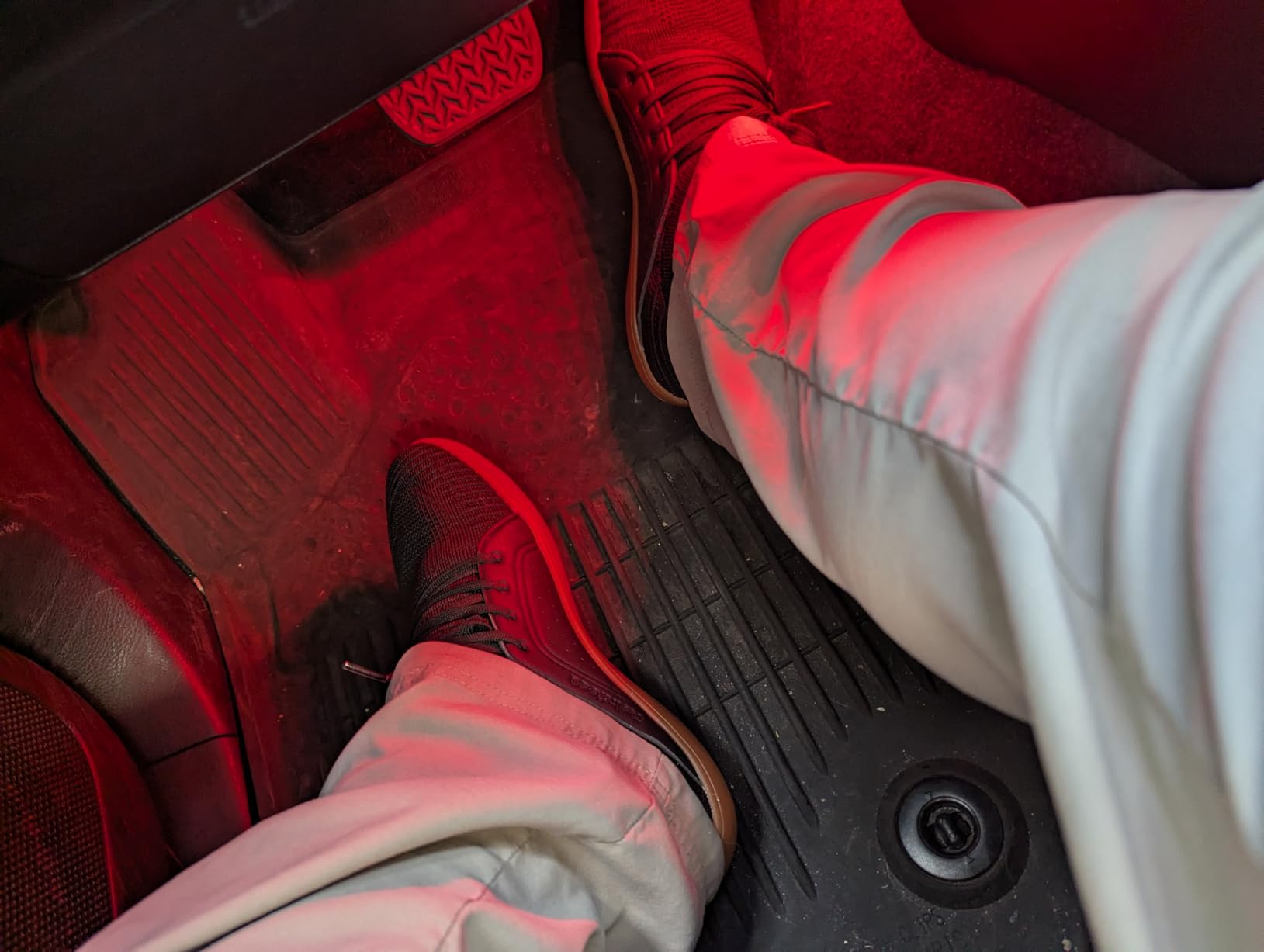
Marketing Claims vs. Reality Check
Wide Toe Box (+0.2in): ✅ Verified. The toe box is genuinely wider than traditional trainers. I measured it against my old Nike cross-trainers, and there’s definitely more room where it counts.
Zero Drop Design: ✅ Verified. True zero drop construction. My heel and forefoot are at the same level, which took some adjustment but improved my lifting stance.
Lightweight (0.55lb per shoe): ✅ Verified. These are noticeably lighter than traditional trainers. Great for reducing foot fatigue during long training sessions.
Flexible & Long-lasting: ⚠️ Partially Verified. Very flexible – passes the bend test easily. Durability is reasonable for the price point, but don’t expect premium longevity.
Breathable Upper: ✅ Verified. The knit mesh does keep feet cooler than synthetic uppers, though not as breathable as premium barefoot shoes.
Performance Against Premium Alternatives
Having tested Vivobarefoot and Xero shoes in the past, I can say these punch above their price point. They’re not as refined as $150+ barefoot shoes – the materials aren’t as premium, and the construction isn’t as durable. But for someone exploring barefoot training or needing a budget option, they deliver 70% of the experience at 20% of the cost.
My Overall Assessment
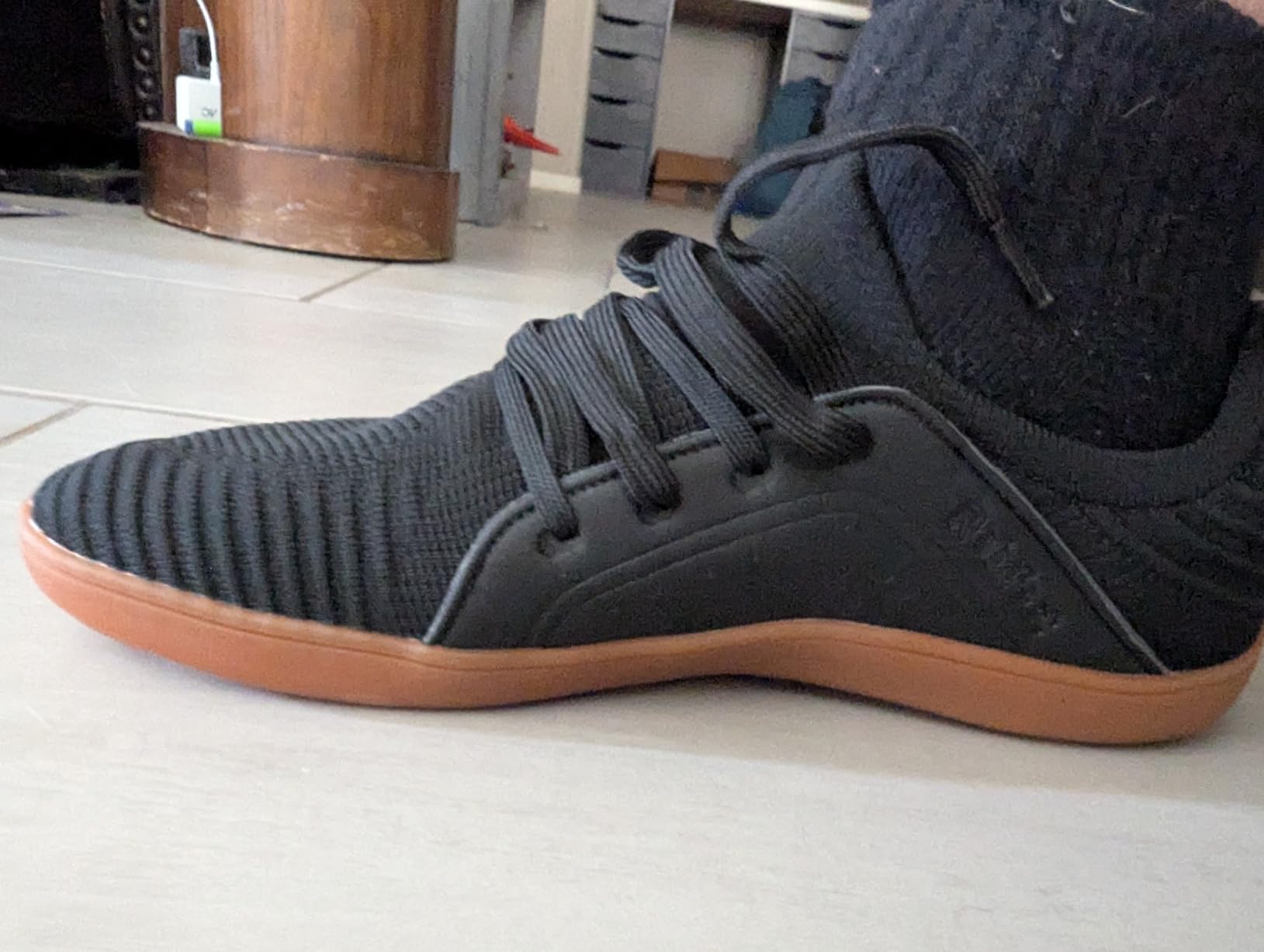
Detailed Performance Scoring
| Category | Score (1-10) | Notes |
|---|---|---|
| Comfort | 8.5 | Wide toe box is a game-changer for comfort |
| Performance | 7.5 | Excellent for cross-training, good ground feel |
| Durability | 6.5 | Reasonable for price, eyelet weakness noted |
| Value | 9.0 | Outstanding value at $35 price point |
| Style | 7.0 | More attractive than typical barefoot shoes |
| Overall Rating | 7.7 | Excellent budget barefoot option |
What Other Cross-Training Enthusiasts Are Saying
The community feedback on these shoes is surprisingly consistent. Most guys appreciate the wide toe box and zero drop benefits, especially those coming from traditional trainers. The durability concerns are real – multiple reviewers mention eyelet failures and sole wear – but most agree the value proposition makes up for the shorter lifespan.
Interestingly, several reviewers mentioned using these as a gateway into barefoot training before investing in premium brands. For that purpose, they’re ideal – you get to experience the benefits without the $150+ commitment.
Value Assessment: Cost Per Wear Analysis
At $35 with an expected lifespan of 6-12 months (depending on use intensity), you’re looking at roughly $0.10-0.20 per day of wear. Compare that to $150 barefoot shoes that last 2-3 years, and the math is interesting: these might actually be more cost-effective for casual users or those unsure about committing to minimalist footwear.
Final Verdict
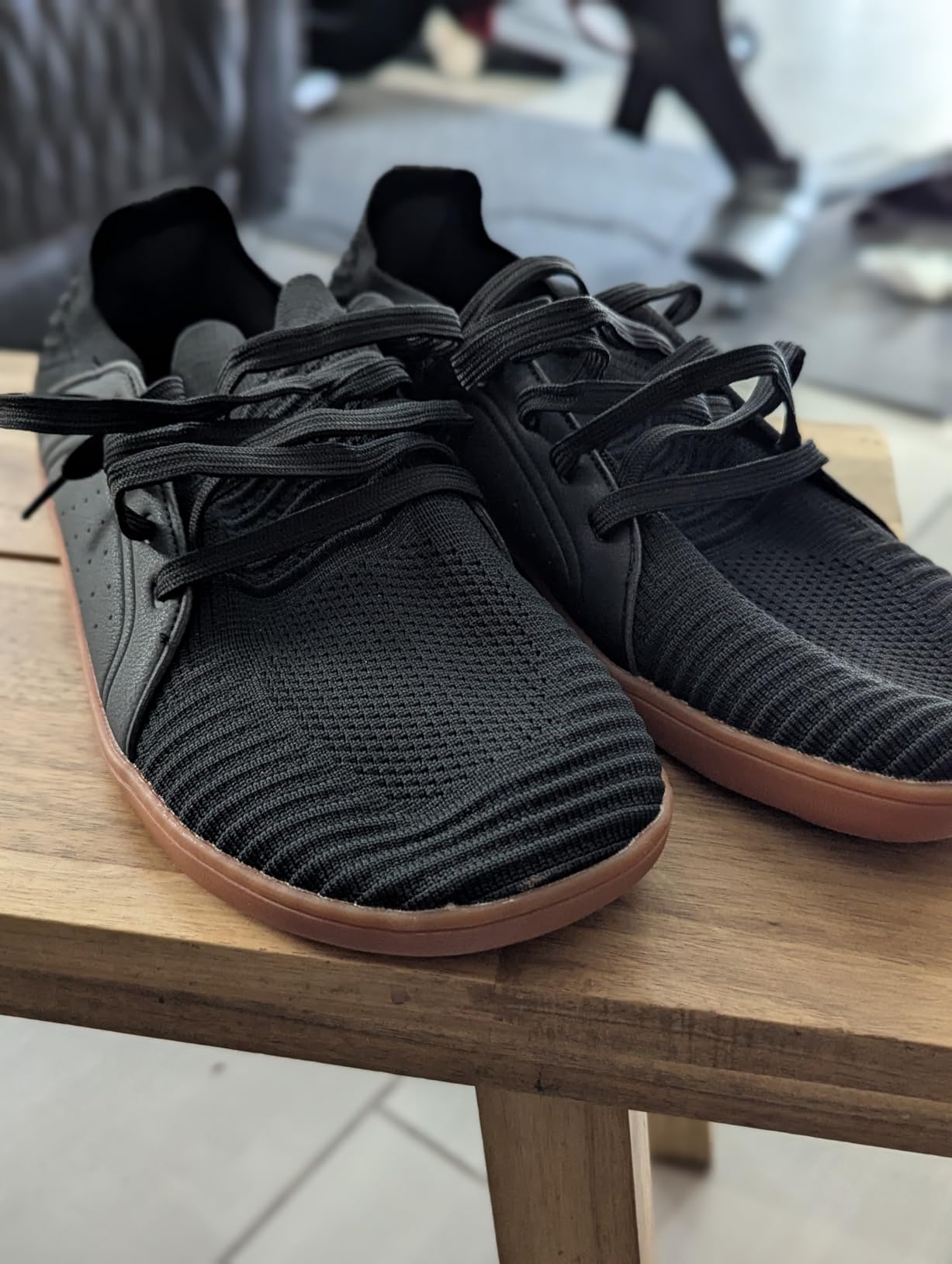
The Good and The Bad
| ✅ What Works | ❌ What Doesn’t |
| • Genuinely wide toe box provides comfort • True zero drop improves lifting stability • Lightweight design reduces foot fatigue • Outstanding value at $35 • Slip-on convenience with lacing support • Versatile styling for gym and casual wear • Good ground feel for barefoot training |
• Eyelet durability issues common • Limited lifespan (6-12 months typical) • Not suitable for serious running • Insole compresses relatively quickly • Takes adjustment period for zero drop • Limited arch support (by design) |
Who Should Buy the Relxfeet Men’s Barefoot Shoes?
Perfect for:
- Guys exploring barefoot/minimalist training without big investment
- Cross-trainers needing wide toe box accommodation
- Weightlifters wanting better ground connection during lifts
- Budget-conscious fitness enthusiasts
- Those with wide feet struggling with traditional trainers
- Casual exercisers needing versatile gym/lifestyle shoe
Skip if you:
- Need shoes for serious distance running
- Require maximum durability from training shoes
- Prefer traditional cushioning and arch support
- Need waterproof or heavy-duty outdoor capabilities
- Want premium materials and construction
Better Options for Specific Needs
For Premium Barefoot Experience: Vivobarefoot Primus Lite III ($130-150) – Better materials, construction, and durability.
For Serious Running: Xero Shoes HFS ($90-110) – More durable sole, better for distance running.
For Maximum Durability: Merrell Vapor Glove 5 ($100-120) – Proven track record for longevity.
For Traditional Cross-Training: Nike Metcon 8 ($130-150) – If you prefer structured support and cushioning.
Final Recommendation
The Relxfeet Men’s Barefoot Shoes punch well above their $35 price point. They’re not perfect – the eyelet durability and limited lifespan are real concerns – but for the money, they deliver a legitimate barefoot training experience that would cost 3-4x more from established brands.
If you’re curious about barefoot training, have wide feet, or need an affordable cross-trainer that won’t break the bank, these are absolutely worth trying. Just go in with realistic expectations about longevity, and consider ordering a backup pair when you find your size.
🛒 Get the best deal:
Frequently Asked Questions
Sizing and Fit Questions
Q: Do these run true to size?
A: Most reviewers find they run slightly large. I’d recommend ordering your normal size first, but be prepared to size down by half if they feel too roomy. The wide toe box can make them feel bigger than they are.
Q: Are these good for wide feet?
A: Absolutely. The wide toe box is the standout feature – it’s genuinely wider than traditional trainers and accommodates foot spreading naturally. Several reviewers with chronic fit issues found relief with these.
Q: Can I wear these without socks?
A: Yes, the design accommodates barefoot wear, though some users find them more comfortable with thin socks. The removable insole helps if you want a more barefoot feel.
Performance and Usage Questions
Q: Are these good for running?
A: They’re adequate for short runs and treadmill work, but I wouldn’t recommend them for serious distance running. The sole may wear quickly with high mileage, and they lack the durability of dedicated running shoes.
Q: How long do they typically last?
A: Based on user reports and my testing, expect 6-12 months with regular use. Heavy gym users might see 6-8 months, while casual users could get closer to a year.
Q: Do I need an adjustment period for zero drop?
A: Yes, expect 1-2 weeks for your calves and feet to adapt if you’re coming from traditional shoes. Start with shorter sessions and gradually increase wear time.
Universal FAQs
Q: What’s the return policy if they don’t fit?
A: Standard Amazon return policy applies. Keep the original packaging and return within 30 days if sizing doesn’t work out.
Q: Are these good for people with foot problems?
A: The wide toe box helps with bunions and toe crowding, but the minimal support isn’t suitable for everyone. Consult with a podiatrist if you have specific foot conditions.
Q: How do I prevent the eyelet tearing issue?
A: Lace gently and avoid over-tightening. The stretchy upper provides most of the fit, so you don’t need aggressive lacing. If an eyelet does tear, you can create a new hole with an awl or leather punch.
Get the best price on Amazon:
Review Scoring Summary
| Performance Category | Mike’s Score | Key Factors |
|---|---|---|
| Overall Comfort | 8.5/10 | Wide toe box, zero drop adaptation, all-day wearability |
| Cross-Training Performance | 7.5/10 | Lifting stability, ground feel, lateral movement support |
| Build Quality & Durability | 6.5/10 | Reasonable for price, eyelet concerns, 6-12 month lifespan |
| Value for Money | 9.0/10 | Outstanding at $35, barefoot experience for budget price |
| Style & Versatility | 7.0/10 | More attractive than typical barefoot shoes, casual versatility |
| FINAL SCORE | 7.7/10 | Recommended for budget-conscious barefoot training |

